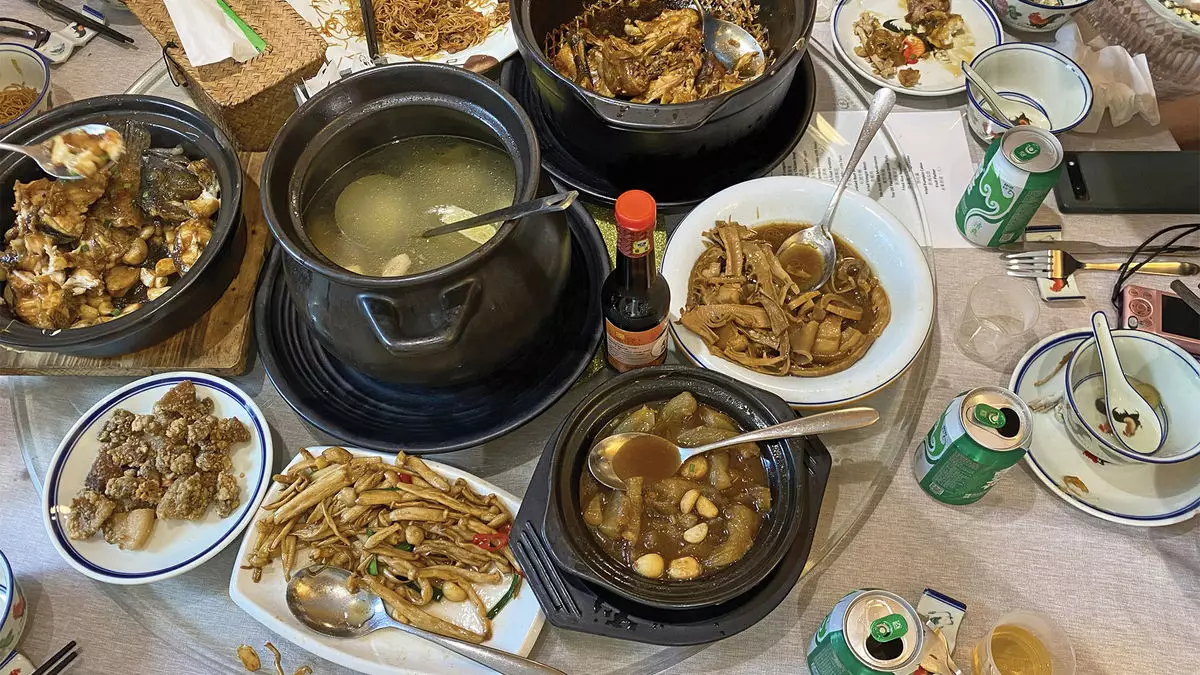For two decades, green tea has been a staple in my morning routine, an unexamined ritual of sorts that I cherished for its comforting aroma and taste. However, a recent voyage aboard the Viking Yi Dun—a unique cruise designed for English-speaking travelers—significantly deepened my understanding of tea, particularly the renowned Tieguanyin oolong. This journey unfolded in China, where I found myself standing amidst the lush tea plantations in Fujian province, experiencing firsthand the intricate journey of tea from field to cup.
My voyage, which transitioned from the vibrant metropolis of Shanghai to the scenic city of Shenzhen, opened a window into the rich tapestry of Chinese culture and its long-standing tea traditions. The Viking Yi Dun offered a new itinerary, celebrating not just the picturesque landscapes, but also the cultural heritage nestled within the country’s history of tea production.
Before we even set foot in the tea fields, the onboard experience was marked by a captivating tea ceremony. As the serene sounds of a guqin gently filled the air, an adept performer executed a graceful ritual of warming cups, brewing tea, and serving it—each movement purposeful and imbued with history. It felt less like a presentation and more like a deeply rooted cultural performance that honored centuries of tradition.
As our cruise docked in Xiamen, our exploration of Fujian began. Bus rides whisked us away into the mountains, and as the landscape unfolded, I was struck by the rows of tea trees, resembling vineyards. Our guide, whose passion for tea was palpable, offered insights into the nuances of Tieguanyin culture, explaining how the oxidation process affects the flavor profile. This moment of enlightenment reminded me that tea is not merely a beverage; it encapsulates a world of heritage and craft that elevates it to art.
The day’s adventure was further enriched by a family-style lunch that featured a delightful mix of local dishes infused with elements of tea—including an aromatic, tea-scented fish that danced on my palate, alongside delectable brisket and my personal favorite, fried pumpkin cakes. It was during this meal that the interconnection between tea and food became evident: both are deeply intertwined within the fabric of Chinese culture, often enjoyed together in a harmonious balance.
After a brief respite, we ventured into a sun-drenched tea field equipped with bamboo hats and woven baskets. The moment I stepped into the terrain of tea trees, the scent enveloped me, bringing back memories of my morning tea rituals. Under the guidance of our local hosts, we learned the art of foraging: the correct method required a delicate touch and an understanding of the leaf structure. Plucking the right combination of leaves was more than a task; it felt like a ritual of respect toward the plant that had provided so much.
As the clouds darkened and rain began to fall, we sought sanctuary under a gazebo, where we learned more about the tea preparation process. A fascinating demonstration awaited us indoors, showcasing how meticulous drying and frying methods are essential in achieving the tea’s distinct flavors. The atmosphere was lively as we attempted to engage in the drying process ourselves, a hands-on experience that connected us to the labor involved in crafting every cup of tea.
Continuing to synthesize knowledge with practical experience, our group transitioned back to the tearoom, where another ritual unfolded. This traditional ceremony mirrored the onboard experience, allowing us to refine our appreciation for tea’s complexities. Each sip was not just a taste but a moment of connection to those who cultivate and craft the beverage.
The concluding moments of our journey left me pondering the question of how frequently these ceremonies are held, emphasizing their importance in maintaining tradition in an ever-accelerating world. As the afternoon waned and the last cups were sipped, I felt compelled to bring a piece of this experience home. My purchases included a few packs of exquisite Tieguanyin tea, each carrying with it stories and a rich heritage I had only just begun to understand.
In retrospect, this tea expedition was more than a culinary endeavor; it was an immersive dive into the culture, history, and artistry of tea that has shaped lives across generations. The experience forged a deeper connection to my morning ritual—a simple cup of green tea transformed into a journey celebrating tradition, craft, and connection.

